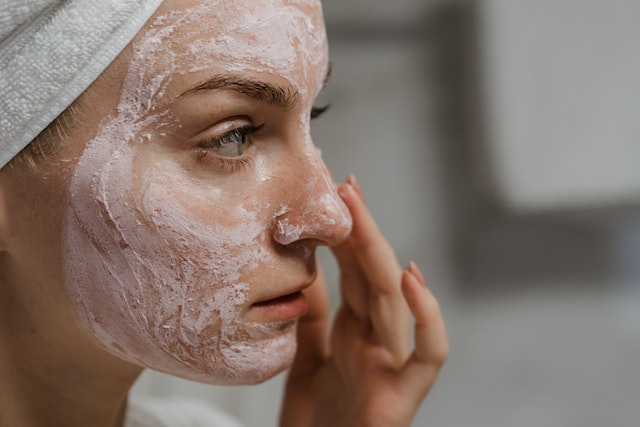As the seasons change and winter sets in, so should our skincare routines. A Winter Skincare switch up can be great. The cold, dry air, harsh winds, and indoor heating can wreak havoc on our skin, leaving it dry, dull, and more susceptible to irritation. To combat these winter woes and maintain healthy, radiant skin, it’s essential to make some adjustments to our skincare regimen. In this blog post, we will explore the reasons why we need to change our skincare in winter and provide tips for nurturing our skin during the colder months.
- Hydration is Key: During winter, the cold air outside and heated environments indoors strip moisture from our skin, leading to dryness and tightness. To counteract this, it’s crucial to prioritize hydration. Switch to a richer, more emollient moisturizer that provides intense hydration and helps seal in moisture. Look for ingredients like hyaluronic acid, glycerin, and ceramides, which attract and retain water in the skin. Applying moisturizer immediately after showering or washing your face helps lock in the moisture while your skin is still damp.
- Protect Against the Elements: Winter weather can be harsh on the skin, with cold winds and low humidity further exacerbating dryness. To shield your skin from these environmental aggressors, invest in a good quality facial moisturizer with built-in SPF. Even though it may not be sunny, UV rays can still harm your skin during winter, especially when reflected off snow. Applying a broad-spectrum sunscreen with at least SPF 30 is essential to protect your skin from UV damage.
- Combat Dryness with Gentle Cleansing: Cleansing is an essential step in any skincare routine, but harsh cleansers can strip away the skin’s natural oils, leading to increased dryness and irritation during winter. Opt for mild, creamy cleansers that effectively remove impurities without compromising the skin’s natural moisture barrier. Look for cleansers that are fragrance-free and gentle on the skin. Consider reducing the frequency of cleansing, as overwashing can further dry out the skin. Instead, focus on nighttime cleansing and rinse with lukewarm water in the mornings.
- Exfoliate with Care: Exfoliation is beneficial for removing dead skin cells and promoting a healthy, glowing complexion. However, during winter, it’s essential to approach exfoliation with caution. Avoid harsh physical scrubs or strong chemical exfoliants that may cause irritation and dryness. Instead, opt for gentle exfoliation methods such as chemical exfoliants with mild concentrations of alpha-hydroxy acids (AHAs) or beta-hydroxy acids (BHAs). Exfoliating once or twice a week can help maintain smooth, radiant skin without compromising its natural moisture balance.
- Don’t Forget the Lips and Body: Our lips and body also require special attention during winter. Cold weather and indoor heating can cause chapped lips and dry skin on the body. Use a nourishing lip balm with ingredients like beeswax or shea butter to keep your lips moisturized and protected. Additionally, swap lightweight body lotions for richer, creamier moisturizers that provide deep hydration and help combat dryness and itchiness.
Transitioning your skincare routine to adapt to the winter season in a winter skin care switch up is essential for maintaining healthy, hydrated skin. Prioritize hydration, protect against the elements, opt for gentle cleansing and exfoliation, and give attention to your lips and body. By making these adjustments and being mindful of your skin’s changing needs, you can keep your skin happy, radiant, and well-nourished throughout the colder months.
Shop skincare here: https://www.arbonne.com/au/en/arb/sarahdowersgdbeauty/shop-all/skincare/c/skincare
Contact us if you’d like a personalised routine. https://www.sgdbodybeauty.com/contact/
References:
- Loden, M. (2003). Role of topical emollients and moisturizers in the treatment of dry skin barrier disorders. American Journal of Clinical Dermatology, 4(11), 771-788.
- Vierkötter, A. et al. (2010). Oxidative stress mediates the adverse effects of air pollution on the skin. Journal of Investigative Dermatology, 131(2), 393-400.
- Davis, E.C. et al. (2012). Exfoliation in the winter months: A dermatologist’s guide. Journal of Clinical and Aesthetic Dermatology, 5(2), 38-44.
- Reinholz, M. et al. (2013). UV light exposure, skin cancer risk, and vitamin D production. Journal of Photochemistry and Photobiology B: Biology, 126, 26-35.
- Draelos, Z.D. (2010). The science behind skin care: Moisturizers. Journal of Cosmetic Dermatology, 9(4), 276-282.



